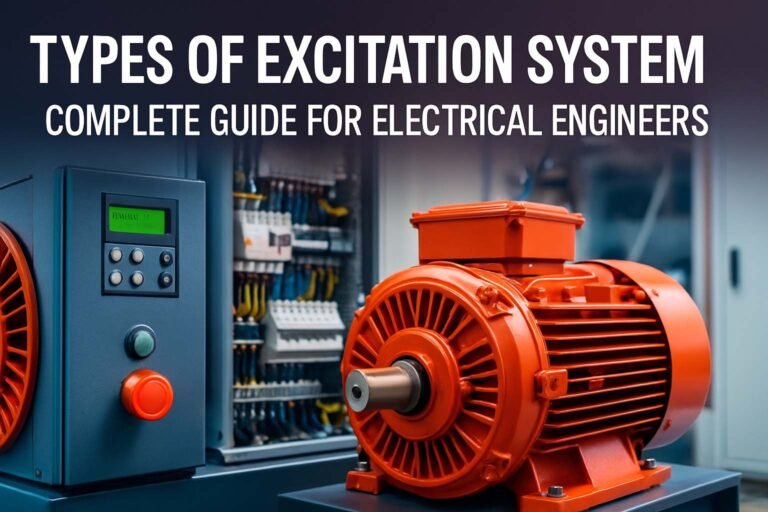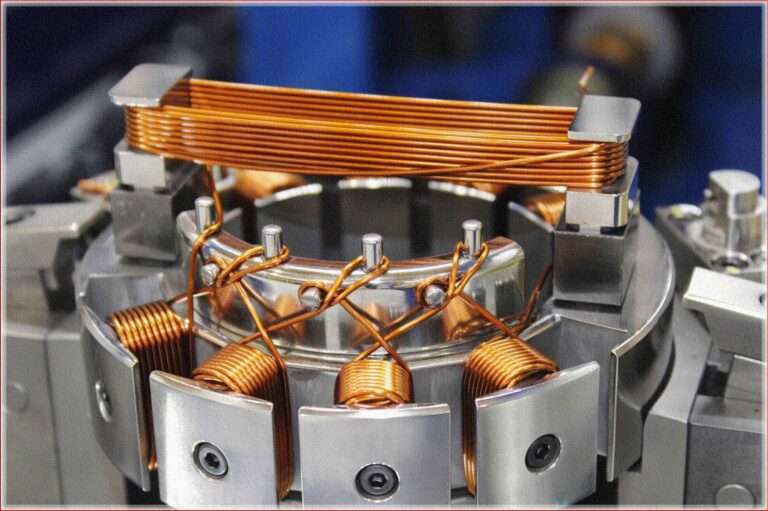Types of Excitation System: Complete Guide for Electrical Engineers
In the world of electrical power systems, excitation systems play a…
Uncover the inner workings of electrical machines with Electrical Hub’s dedicated category. Explore the principles, types, and applications of electrical machines, from motors to generators. Gain valuable insights to harness the power of electrical machinery for your projects and applications.

In the world of electrical power systems, excitation systems play a…

The ABB excitation system is a state-of-the-art technology used in power plants and other electrical generation facilities to control the field current of synchronous generators. ABB is a leading global technology company known for its innovative solutions in power and automation.

The excitation control system is a crucial component in power generation that ensures the proper control and regulation of the generator’s field current. It plays a vital role in maintaining the generator’s terminal voltage within acceptable limits, supporting reactive power flow, and ensuring stable and synchronized operation.

The static excitation system is an advanced technology used in modern power plants to provide precise and efficient control of the generator’s field current. It employs solid-state devices, such as thyristors or silicon-controlled rectifiers (SCRs), to regulate the excitation current, ensuring stable and synchronized operation of the generator.

The excitation system of alternator is a critical component responsible for supplying the necessary field current to the generator’s rotor winding. This field current creates a magnetic field, inducing voltage in the stator windings, thus producing electrical power.

The features of excitation system of synchronous generators play an important role in power system stability. Excitation Systems are responsible for providing the necessary field current to the generator’s rotor winding to ensure stable and synchronized output voltage. It incorporates various features that contribute to its efficient and reliable operation.

Purpose of Excitation system is to regulate the generator’s terminal voltage and maintain the system’s stability during varying load conditions and disturbances.

The excitation system models of a synchronous generator are mathematical representations that simulate the behavior and dynamics of the excitation system. These models are used in power system studies, stability analysis, and control design.

The excitation system of a synchronous generator is a critical component that ensures the generator produces and maintains the desired voltage and reactive power output. It consists of various components and control mechanisms that work together to regulate the generator’s field current, thereby creating a stable and consistent magnetic field in the rotor.

An automatic stator winding machine is a specialized piece of equipment used in the manufacturing process of electric motors and generators. It is designed to automate the winding process of stator coils, which are a crucial component in these machines.
| Cookie | Duration | Description |
|---|---|---|
| cookielawinfo-checkbox-analytics | 11 months | This cookie is set by GDPR Cookie Consent plugin. The cookie is used to store the user consent for the cookies in the category "Analytics". |
| cookielawinfo-checkbox-functional | 11 months | The cookie is set by GDPR cookie consent to record the user consent for the cookies in the category "Functional". |
| cookielawinfo-checkbox-necessary | 11 months | This cookie is set by GDPR Cookie Consent plugin. The cookies is used to store the user consent for the cookies in the category "Necessary". |
| cookielawinfo-checkbox-others | 11 months | This cookie is set by GDPR Cookie Consent plugin. The cookie is used to store the user consent for the cookies in the category "Other. |
| cookielawinfo-checkbox-performance | 11 months | This cookie is set by GDPR Cookie Consent plugin. The cookie is used to store the user consent for the cookies in the category "Performance". |
| viewed_cookie_policy | 11 months | The cookie is set by the GDPR Cookie Consent plugin and is used to store whether or not user has consented to the use of cookies. It does not store any personal data. |